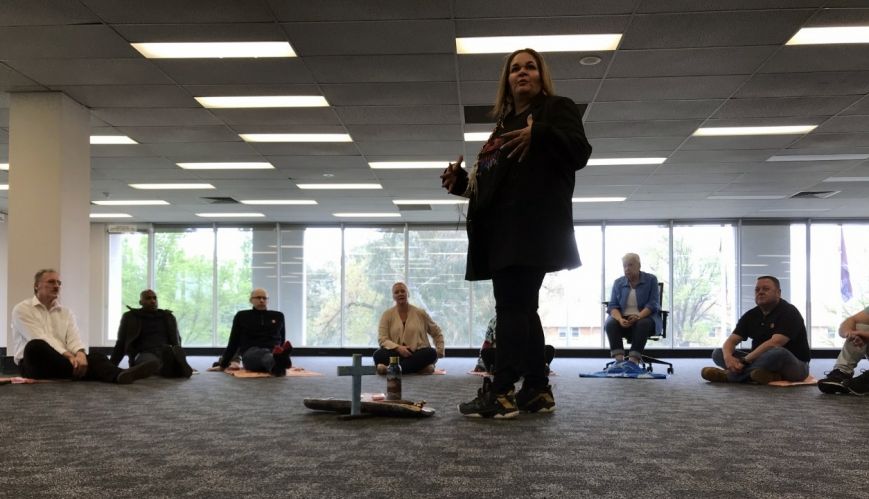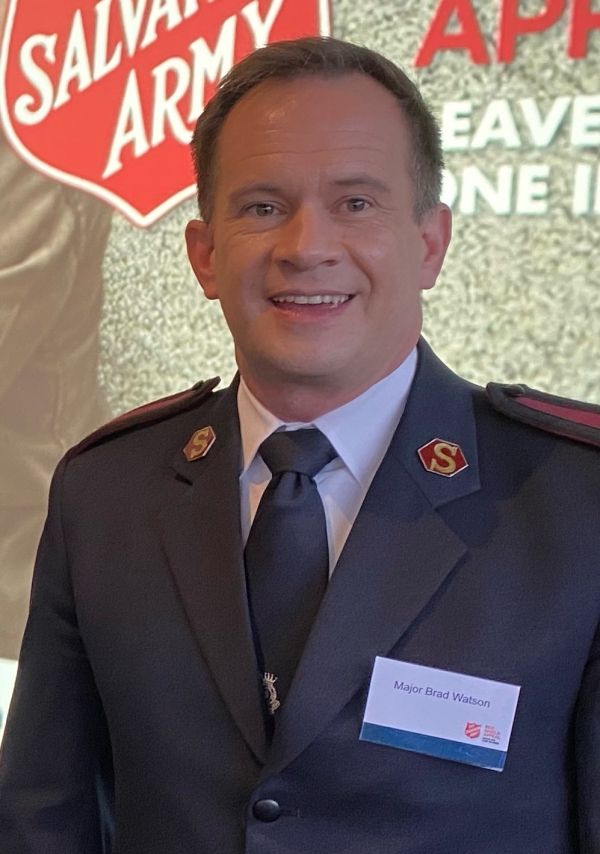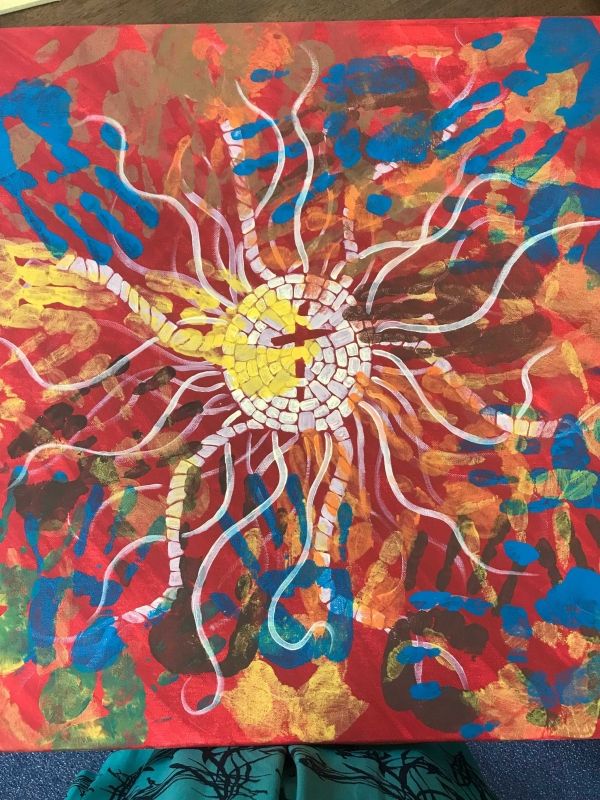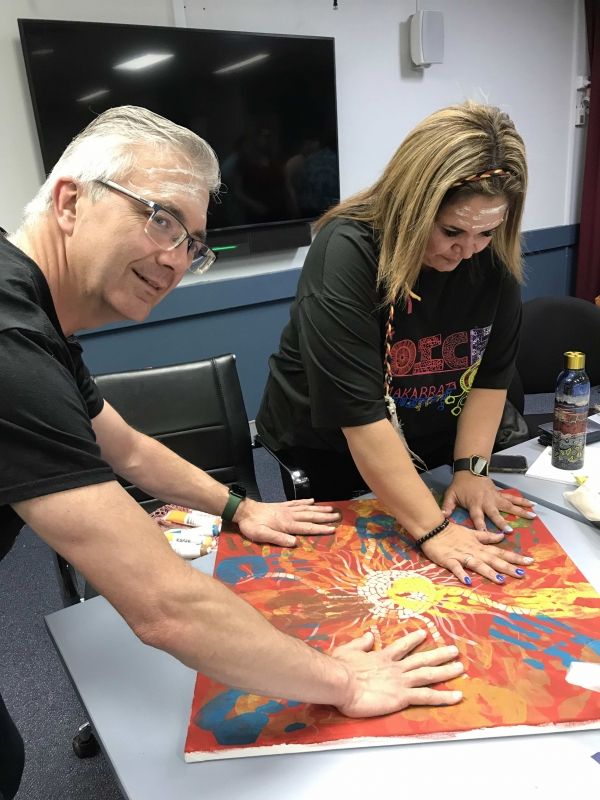Yarning circle a place of grace

Yarning circle a place of grace
25 January 2023
Lucy Davis, Reconciliation Action Plan and Projects Manager, leads the yarning circle in reflection and discussion.
Major Brad Watson is Head of Community Engagement nationally and is involved with emergency services and similar programs. He has served in Tasmania for the past six years. Brad gathered with other leaders in the Mission Delivery portfolio last October for a ‘Walk on Country’ and a ‘Yarning Circle’ to learn from First Peoples’ history and talk about the challenge ahead. Others writer Anthony Castle spoke to him about this experience.
 Major Brad Watson.
Major Brad Watson.
A walk on country is a way to connect with the environment, each other and raise awareness about First Peoples. How did the walk on Country work?
A group of us gathered for the Mission Portfolio Leaders gathering in Canberra, on Ngunnawal country. We participated in a walk on Country, then a yarning circle. We heard from one of the education officers at the National Arboretum, who talked us through some cultural artefacts of the Ngunnawal and Wiradjuri people.
We visited the butterfly garden, built to reflect a dreaming story of the Ngunnawal people, and a bush tucker garden as well. There were all these things we wouldn’t ordinarily look at, plants that were also herbal teas or medicines. It was valuable, this awareness that all this food and medicine was around us. I lived 47 years in this country, and there are things I’ve never known. It all has a story behind it, but unless we walk and listen, we will never know about it.
Aboriginal and Torres Strait Islander peoples have been using yarning circles for thousands of years. They can be collaborative spaces, a way to communicate and provide a respectful place to be heard and to respond. What did you learn through the process?
We set up and shared in a yarning circle. There were some real personal connections made, and we discussed what may be proposed to Australia in terms of a referendum regarding an Aboriginal and Torres Strait Islander voice to Parliament.
 The Mission Leadership Team created artwork to signify their commitment to ‘voice’.
The Mission Leadership Team created artwork to signify their commitment to ‘voice’.
There was healthy emotion about the discussion; we recognised the gift to us that was the Uluru statement. It’s a very generous offering, as they seek to articulate a way forward that everyone could get on board with. We recognised that gift and are invited to journey with them towards voice, treaty and truth. The yarning circle became a place of grace.
What impact do the walk and yarning circle have? Does being connected to Country and each other change how you see things?
There’s the physical component of it. It grounds you, being in the sun, in the fresh air. We felt calmed ... and walked and talked with each other. We had our awareness of the local Aboriginal community elevated. We had shared in a time of learning so that when we came to speak about the impending referendum on the Indigenous voice to Parliament, we were really grounded to talk about it.
At its heart, we have a people who have been dispossessed and disadvantaged, and continue to be, who have approached the rest of Australia, and said, here’s a way forward. That is an incredibly gracious gift, so it’s incumbent on us on how we respond to that gift; how do we formulate a personal and corporate response?
 The artwork uses the elements of the RAP artwork as the basis for the piece, drawing on the message of unfinished business, grace and walking together.
The artwork uses the elements of the RAP artwork as the basis for the piece, drawing on the message of unfinished business, grace and walking together.
How can we balance the personal and the corporate response going forward?
From a corporate response, our mission statement says that ‘wherever there is hardship and injustice, we will live, love, and fight’. There is hardship in what is not healed and what is not spoken about, as well as gaps in experiences between Indigenous and non-Indigenous Australians. Given our reconciliation action plan, and our want to fight injustice, our theology that everyone is made in the image of God, we must respond.
The personal response I think it elicits is the need to be educated, to understand the simplicity of what is being asked. The referendum in 1967 was a simple request, ‘please count us’. Now, the request is ‘please hear us’. I’m hopeful that non-Indigenous Australians take the time to be aware of the local community, to educate themselves about local histories, and why it’s critical that a voice to Parliament is brought into being.
I know our state here in Tassie has a really dark past. It can be hard to educate yourself and process some of the lies we’ve heard or the things we’ve been taught. But it’s incumbent on us to educate ourselves and take this journey, to find it within ourselves to graciously respond to what’s been offered to us.